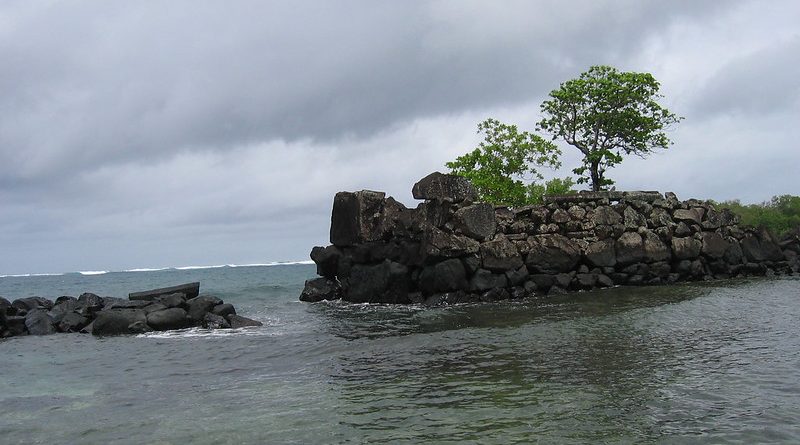Venice of the Pacific: Nan Madol
History Facts
Where: Pohnpei, Federated States of Micronesia, Pacific Ocean
When: 12th or 13th century
History: Inspiring architecture of late Saudeleur Dynasty royal civilization
Where It’s At
The most famous of all the archaeological sites in the Federated States of Micronesia is Nan Madol on Pohnpei Island. The state of Pohnpei is made up of the large Pohnpei Island plus six surrounding inhabited atolls. Pohnpei Island is the largest and tallest of all the Micronesian islands. Due to the island being so mountainous, a much higher level of rainfall is experienced than on neighboring islands. Forty rivers running down from the mountains making it a lush, tropical paradise.
History of Nan Madol
Nan Madol comprises over 90 rectilinear islets constructed on the reef flat next to Temwen Island in Pohnpei’s lagoon. The ruins of Nan Madol have collapsed but it is still an impressive structure that used to house temples, vaults, bathing areas, and pools. Called the ‘Venice of the Pacific’, Nan Madol was a manmade city with ocean-filled channels which once housed a thriving, royal civilization.
It is thought that there was human activity at this site as early as the first or second century, but it is probable that the structure of Nan Madol was not built until the twelve or thirteenth century by the Saudeleur Dynasty (500AD to 1450AD).
As a complete structure Nan Madol would have been awe inspiring. It was architecturally magnificent, built from basalt pillars – in a similar way that you might build a log chalet – with the logs layered in opposite directions. Instead of logs, the naturally formed crystalline blocks of basalt were transported a long way form their source to the site.
Archaeological evidence and oral traditions relate that Nan Madol was the administrative and religious centre (Madol Pah) of Pohnpei. The labor costs and power commanded to build such structures from basalt were huge, showing that the Saudeleur must have been very powerful kings. It is said that Isokelekel, the people’s hero, was instrumental in overthrowing the Saudeleur and replacing them with the Nahnmwarki whose heritage stills lives on with the islanders today.
Nan Madol is thought to have had religious or ceremonial significance. Priests are thought to have overseen mortuary practices and the day-to-day living of nobility who inhabited Nan Madol. There were two separate areas: one for the living and another for the dead. It is thought that a population of less than a thousand lived in Nan Madol. Madol Powe, the mortuary part of the site, was spread over 58 islets in the northeast of the complex. Other islets in the complex seem to have been assigned specific functions where priests carried out practical tasks like coconut oil preparation on Peinering.
Visiting Nan Madol Today
Tours can be organized from Pohnpei Island, either to learn about the history of Nan Madol or as part of a general natural history tour.
More Information
Met Museum: Nan Madol
Pictures and a more in depth look at the architecture and structures of Nan Madol.
By Faye Welborn




